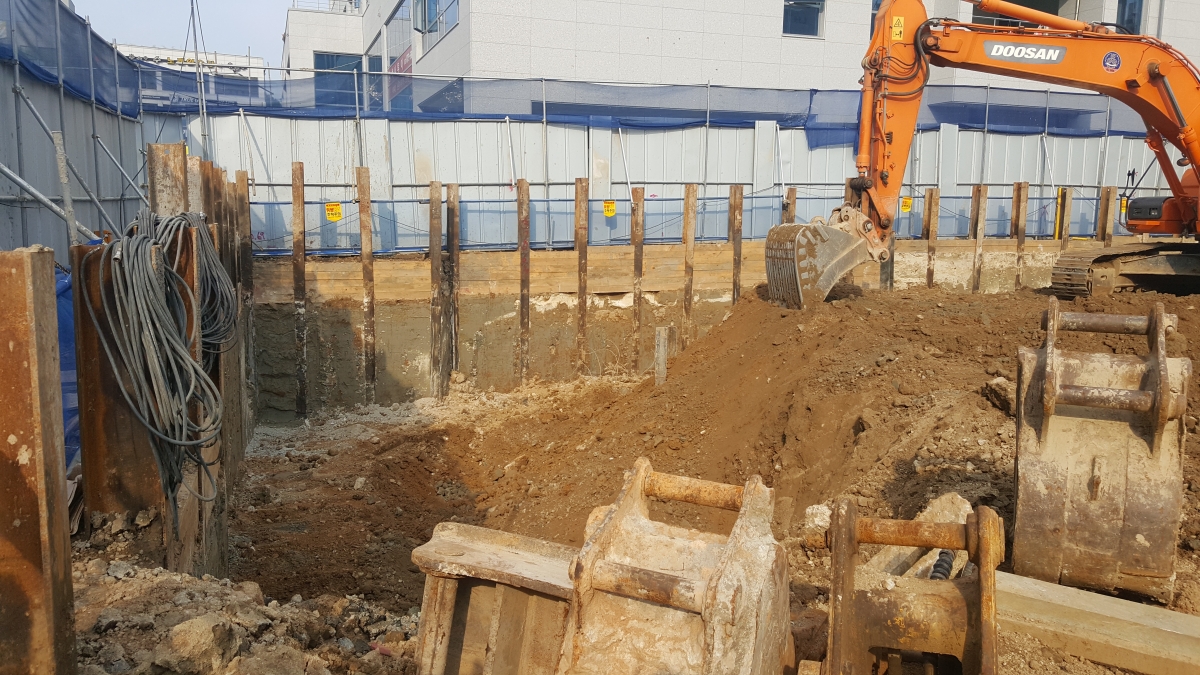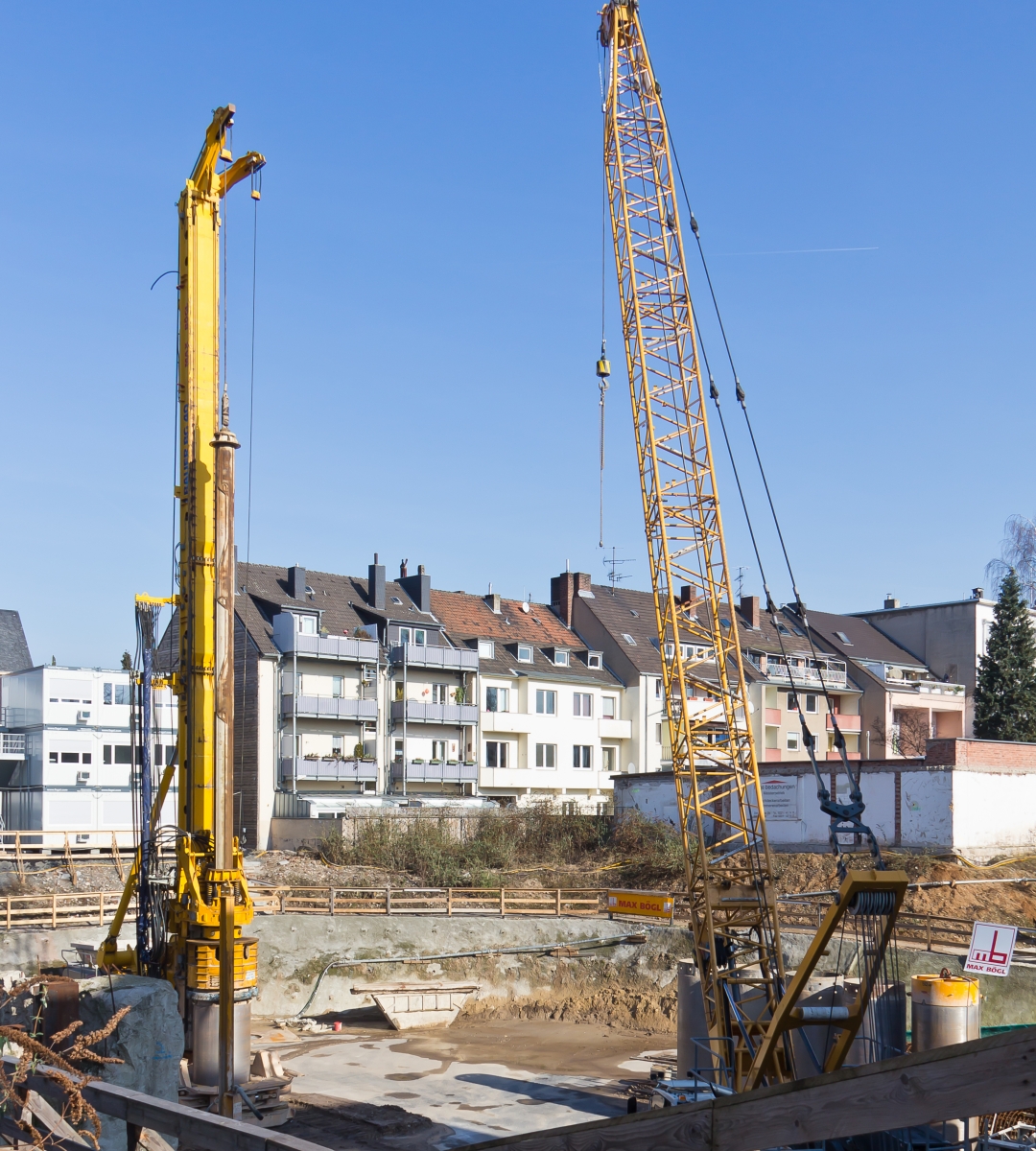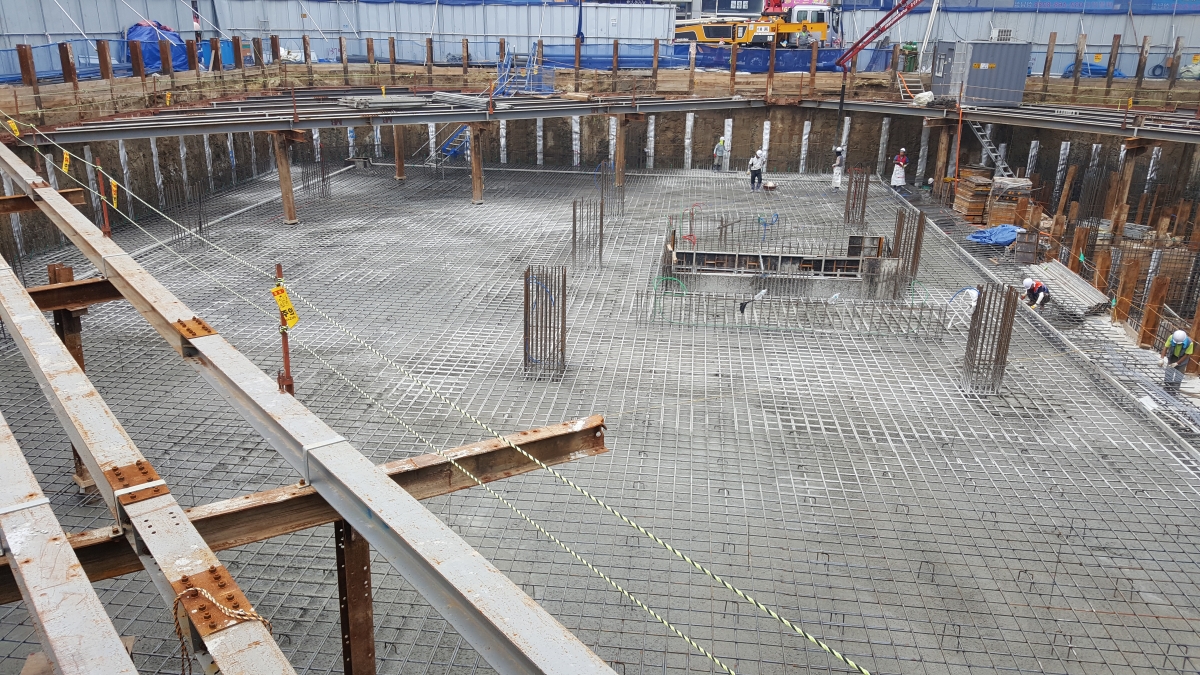(upper image) ⓒKim Kyoungtae
While we all share the same planet, only a few of us have expressed concerns for the earth’s well-being and about the amount of damage wreaked upon nature. Making improvements to the convenience of our quality of life has now reached a state of no recovery, and we are now aware of the need to unite to tackle this shared challenge of our age described as climate change, or climate crisis. We must review what we have long taken for granted and ask ourselves: ‘does this threaten the environment?’ Correspondingly, what can we ask of architecture and what will improve our quality of life and human dignity in the midst of our ongoing climate emergency? What should we do? By reviewing a building’s life cycle from production, maintenance, and demolition, in the context of climate crisis, we will examine pertinent responses in this issue of SPACE.
STEP 1: During Construction
Question 1: How Deep and Wide Are We Digging?
Question 2: Can We Replace the Materials Most Frequently Used by Our Building Industry?
Question 3: Is It Possible to Produce Materials to Build in the City?

interview Tae Sungho professor, Hanyang University, Hyun Yoonjung researcher, Korea Environment Institute × Kim Yeram
Kim Yeram (Kim): The required excavation process for building structure stabilisation and for the creation of underground space produces large quantities of carbon emissions, but its environmental pollution impact often goes unnoticed because this process is not as visible. Is there a method by which we can measure the amount of carbon emissions produced during excavation work?
Tae Sungho (Tae): Most of the excavation or construction equipment such as bulldozers, excavators, and rollers use diesel as their energy source. As such, the carbon emissions produced as a result of excavation work can be calculated by measuring the amount of energy consumed by the equipment at the construction site. By multiplying the amount of energy used in the excavation work per carbon emission unit, it is possible to measure the amount of carbon emissions produced in the excavation process. While the amount of carbon emissions produced in excavation work can be quantified in this way, detailed analysis is still a difficult matter.
Kim: The depth of the underground spaces required by each facility is likely to vary. How are underground spaces classified according to the depth of excavation, and what environmental changes occur in each area during soil construction?
Hyun Yoonjung (Hyun): In Korea, there is no legal standard for classifying the depth of underground spaces, but the standard set by the Seoul Metropolitan Government’s Comprehensive Underground Space Plan (2006) is the acknowledged set standard. In this plan, underground space is divided into 4 classes: 0 – 5m underground; 0 – 20m underground; 20 – 40m underground; deeper than 40m. Infrastructure such as water, sewage, gas, and power lines are mainly installed at 0 – 5m underground, while underground parking lots, underground shopping malls, and underground sidewalks, (facilities connected to the ground level) are built at lower depths. The level at 20 – 40m underground is used as for urban transportation networks, such as subways and underground roads, and the depth over 40m underground is typically used for support facilities such as power generation and transmission facilities, information network facilities, and commercial storage. The excavation depth from -5m to -20m not only damage soil biodiversity but also reduce terrestrial carbon storage. Excavation at deeper levels cause leakage of underground water and a drop in water level, and this can aggravate stream depletion in the vicinity and an urban heat island effect. Excavation to -40m and below can obstruct water-intake and cause drought, which might lead to problems in terms of securing emergency water supply in preparation against disasters.
Kim: By dividing a building’s life cycle into the phases of its production, construction, management, and demolition, Korea’s Life Cycle Assessment (LCA) reviews the building’s environmental impact at each of these phases. I am curious to know to which of these phases does the preparation of foundation via excavation work belong, and the degree of emphasis placed on environmental impact?
Tae: The excavation process for foundation work belongs to the life cycle of the building’s construction phase. From the perspective of a building’s life cycle, the current evaluation standard for environmental impact is mostly determined by the amount of energy used in the post-construction phase—i.e., when the building is being used. According to this standard, the amount of carbon emission produced at the construction phase, including the excavation process. is lower than the emission comes from its post-construction phase. However, it is regrettable that more careful evaluation of each life cycle phase, including the construction phase, is not yet being undertaken.
 ⓒRaimond Spekking
ⓒRaimond Spekking

Kim: In China, the ‘Assessment Standard for Green Building’ (ASGB) evaluation system monitors not only energy conservation during the construction phase but also the reduction of water resource usage and the volume of excavation. It seems that this evaluation standards system puts more importance on cutting down use of resources and pollution levels at the construction phase compared to Korea’s ‘Green Standard for Energy and Environmental Design’ (G-SEED) evaluation system.
Tae: G-SEED focuses on land use and traffic, energy and environmental pollution, material and resources, water flow management, building maintenance and management, ecological environment, interior environment, and design innovation as the core elements for evaluation. Under LCA’s evaluation of design innovation, there is a sub-topic for the ‘Evaluation of Building’s Life Cycle’ which reviews the environmental impact of the construction phase, including earth work. Aside from checking the amount of carbon emissions as a mandatory part of any environmental evaluation, the two further elements concerning environmental impact – such as the use of water and natural resources – also need to be monitored; however, the latter two soil environment elements are not yet specified in our assessment model. There is therefore the need to update the current G-SEED to include various evaluation standards of environmental impact in response to recently emerging issues concerning fine dust, the conservation of natural resources, and ecotoxicity.
Kim: There is active ongoing research in the US and Europe regarding the ‘Critical Zone’. How has this research affected approaches to conservation towards the soil environment in terms of its diversity and details?
Hyun: Since the early 2010s, numerous professionals have conducted research regarding the critical zone by using data gathered primarily in the US, Europe, and China via the Critical Zone Observatory network programme. This research enterprise has revealed a close mutual relationship between soil function and elements such as the soil production process, vegetation and atmosphere, and surfaces and underground water. With this new finding, Europe now reviews not only the underground and aboveground environment but also addresses factors such as the water resource, climate change, biodiversity, and energy resource when proposing policies and strategies regarding soil function conversation. A new strategy for conserving soil function has also been included in Korea’s second Soil Conservation Master Plan (2020 – 2029) which was adopted last year. The new plan goes beyond the earlier plan, which mainly focused on dealing with pollution, with an eye to the more comprehensive improvement of soil environmental health by spreading its attention across soil water storage, carbon cycle, and the management of atmosphere and water quality.
Kim: To reduce the ground and air pollution load created in the excavation process in the face of the climate crisis, what is the nature of the general environment that needs to be put in place?
Tae: To reduce the energy use and environmental impact of excavation work, we need to introduce environmentally- friendly construction equipment. Fuel-efficient excavators and wheel loaders of high energy efficiency are currently being commercialised, and the development of excavators and forklifts with hydrogen engines that can replace diesel- based construction heavy equipment is picking up speed. This reflects how the demand to resolve problems concerning not only carbon emission but also the presence of fine dust and the destruction of ecological environments during excavation work can influence the development and installation of environmentally-friendly construction equipment. By applying such environmentally-friendly equipment on the construction site, research institutes must analyse and evaluate the effectiveness of these new changes at the construction site regarding the reduction of environmental impact.
Hyun: Along with the climate crisis, we are now living at a time in which large-scale underground development within the urban centre is inevitable. As such, there is the need to develop an underground environmental effect evaluation system as a part of comprehensive urban planning. As the present environment effect evaluation is mostly focused on levels aboveground, it is limited in terms of producing an accurate picture of the soil environment. To supplement this, we need to designate ‘Earth’ (as they do in the US) as an independent evaluation criterion to include elements such as geological structure analysis, ground stability, and underground water usage and leakage as part of the evaluation process. There is the need to install a system that can accurately measure and analyse data regarding underground water levels and ground subsidence which are used in respective underground monitoring systems such as the Post-Environmental Impact Assessment and the Environmental Impact Assessment of Underground Safety.





